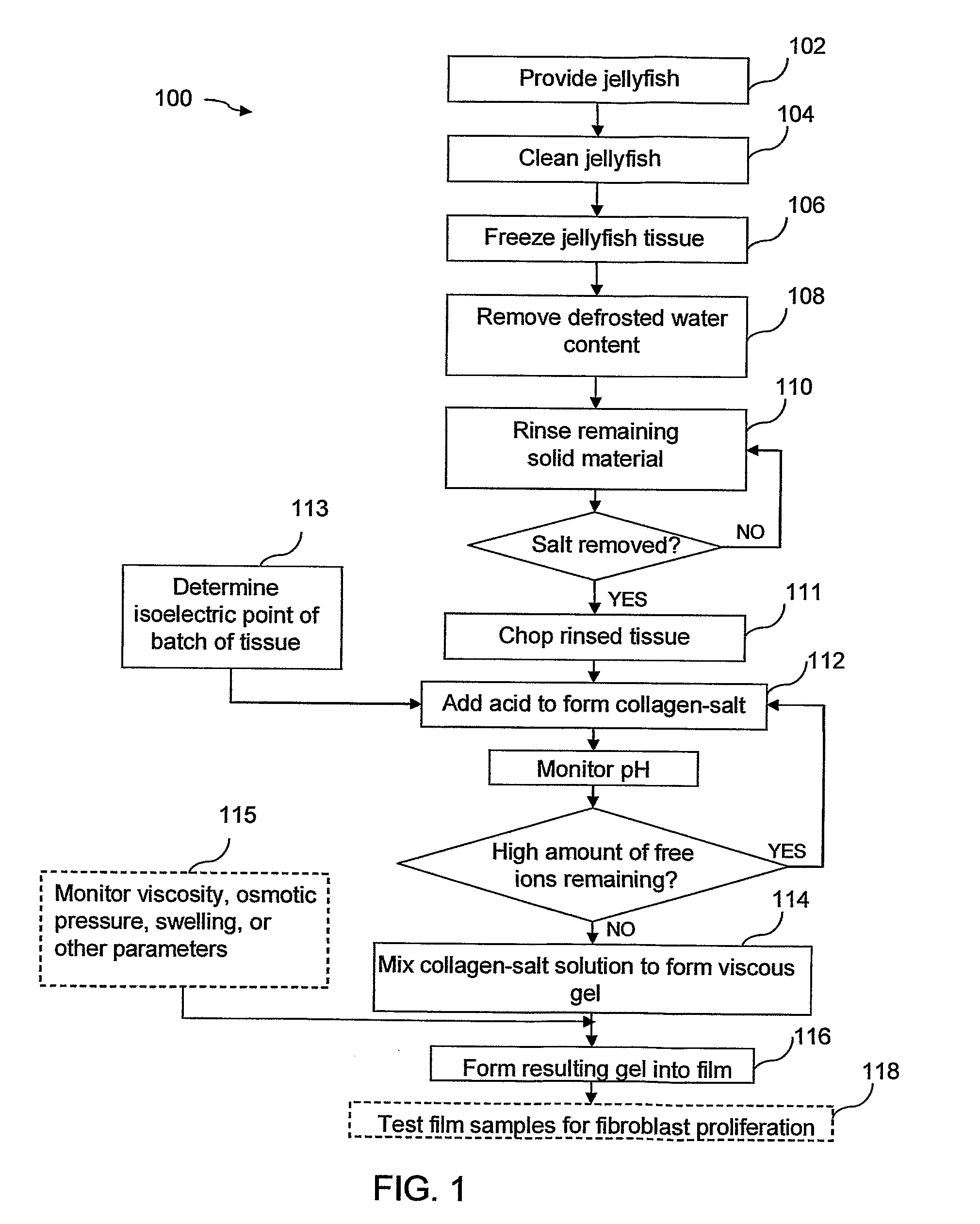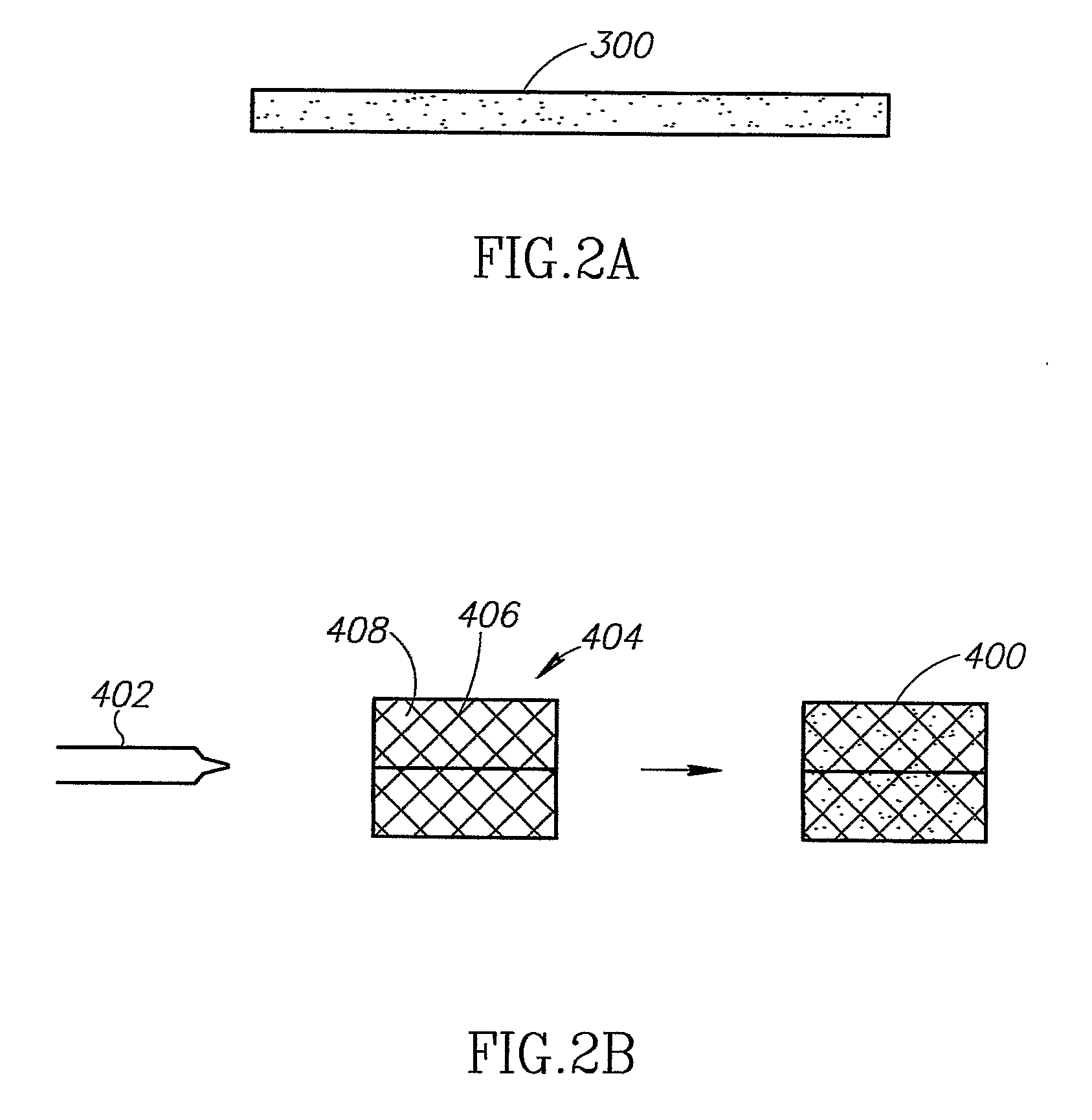Colloidal collagen burn wound dressing produced from jellyfish
a burn wound and collagen technology, applied in the field of burn wound dressings, can solve the problems of affecting the healing effect of the burn wound,
- Summary
- Abstract
- Description
- Claims
- Application Information
AI Technical Summary
Problems solved by technology
Method used
Image
Examples
second embodiment
[0029]In a second embodiment, a film / fabric composite 400 is formed either by immersing a piece of fabric 404 in the gel, or by injecting the viscous colloid liquid via an injection device 402 such as syringe into the piece of fabric 404. Fabric 404 may be gauze, woven fabric, or any other suitable fabric. In some embodiments, fabric 404 is comprised of structural elements 406 and pores 408. Structural elements 406 may have a rope-like structure, a weave-like structure, or any other structure which may allow for the presence of pores 408. After injection, the film / fabric composite may be dried under vacuum in a vacuum oven at a relatively low temperature (approximately 20°-30° C.). Once the film is dried, the temperature may be raised to 100°-110° C. and heated for a period of time (approximately 24 hours) under vacuum.
first embodiment
[0030]An advantage of this embodiment is that pores are naturally present in the material, which can enhance exudation and healing of the wound. In a free-standing film, as in the first embodiment, it may be necessary to introduce pores, which can be done, for example, by deaerating and then injecting air into the gel at a fixed rate and speed, or by using lasers.
[0031]In some embodiments, small amounts of food grade agents may be added to enhance film pliability and / or stability. In addition, any enhancement agents, such as vitamin C or other natural healing elements may be added. Film / fabric composites may be tested for fibroblast attachment and proliferation in vitro, and may be used for wound dressings and other applications.
PUM
| Property | Measurement | Unit |
|---|---|---|
| thickness | aaaaa | aaaaa |
| temperature | aaaaa | aaaaa |
| temperature | aaaaa | aaaaa |
Abstract
Description
Claims
Application Information
 Login to View More
Login to View More - R&D
- Intellectual Property
- Life Sciences
- Materials
- Tech Scout
- Unparalleled Data Quality
- Higher Quality Content
- 60% Fewer Hallucinations
Browse by: Latest US Patents, China's latest patents, Technical Efficacy Thesaurus, Application Domain, Technology Topic, Popular Technical Reports.
© 2025 PatSnap. All rights reserved.Legal|Privacy policy|Modern Slavery Act Transparency Statement|Sitemap|About US| Contact US: help@patsnap.com


